Are you struggling to squeeze a workout into your day, or can’t face the gym? Home workouts are your answer. This guide cuts through the clutter to show you exactly how to achieve a full-body fitness regimen from the comfort of your home—no equipment needed. Expect to discover convenient, adaptable exercises that promise to suit your schedule, space, and current fitness level.
Key Takeaways
-
Home workouts offer convenience, cost savings, and personalization, allowing for exercise anytime without the need for expensive equipment or gym memberships, and can be adapted to suit any fitness level.
-
A balanced home workout routine should include aerobic fitness, strength training, core exercises, balance training, flexibility, and stretching, with various specific exercises described for a full-body workout.
-
Maintaining motivation for home workouts involves setting realistic goals, establishing a routine, tracking progress, and finding accountability partners while also ensuring safety and integrating proper nutrition and recovery.
The Benefits of Home Workouts
The idea of achieving your fitness goals without stepping foot in a gym might have seemed far-fetched in the past, but home workouts have proven to be a powerhouse for personal health and fitness. By bringing the gym to your living room, you unlock a treasure trove of benefits tailored to your lifestyle and preferences. From the luxury of crafting your workout environment to the financial perks of ditching expensive memberships, home workouts are a game-changer in the realm of fitness.
In the sections that follow, we’ll delve into the specific advantages of exercising at home, such as convenience and time-saving, cost-effectiveness, and the flexibility to personalize your fitness journey. Whether you’re a busy parent, a committed professional with a tight schedule, or simply someone who cherishes the comfort of their own space, home workouts offer a practical solution to staying in shape and feeling great. So, let’s explore how you can transform your home into a fitness oasis and reap the multitude of benefits that come with it.
Convenience and Time-Saving
The convenience of exercising at home is a major appeal for many individuals. It allows one to incorporate physical activity into their busy schedule without having to leave the house. Even with limited time, workouts can be split into smaller segments throughout the day and easily fit within short periods of free time.
And what’s more? Home exercises can be performed using just your body weight or common household items like water bottles as makeshift weights. This not only saves money on purchasing traditional equipment but also eliminates the need for travel and set-up time typically associated with gym visits.
Cost-Effectiveness
Let’s discuss finances in more depth. Gym memberships can be a significant expense with costs that may include a monthly fee, an initiation fee, and sometimes additional charges for special classes or personal training sessions. In contrast, home workouts eliminate these costs. Once you’ve invested in some basic equipment—if any at all—there are no further expenses, making it a one-time investment for long-term fitness.
The indirect costs associated with gym workouts, such as transportation, parking fees, and time spent commuting, can add up quickly. With home workouts, these additional expenses are non-existent. You also save on the small purchases that tend to accumulate, like sports drinks or protein bars often bought on impulse at the gym.
The financial benefits of home workouts extend to your wardrobe. The need for fashionable gym attire is reduced when exercising in the privacy of your own home, allowing for more casual or comfortable clothing that doesn’t need to be updated as frequently.
In essence, the cost-effectiveness of home workouts is multifaceted. Not only do you save on the direct costs of gym fees and equipment, but you also avoid the hidden expenses that can strain your budget. This makes working out at home an economical and practical choice for maintaining fitness without the financial burden.
After all, staying fit is an important aspect of our lives, but it shouldn’t be a financial burden.
Flexibility and Personalization
One of home workouts’ greatest advantages is its flexibility. They allow you to tailor your workout experience according to your preferences without any external limitations. This means that you have the freedom to choose and adjust specific routines as desired. Home workouts are highly adaptable, with a wide range of online exercises and routines available for modification based on changing fitness levels or specific fitness goals.
Engaging in enjoyable activities can greatly enhance the overall exercise experience, increase motivation, and help maintain a consistent workout routine over time.
Building a Balanced Home Workout Routine
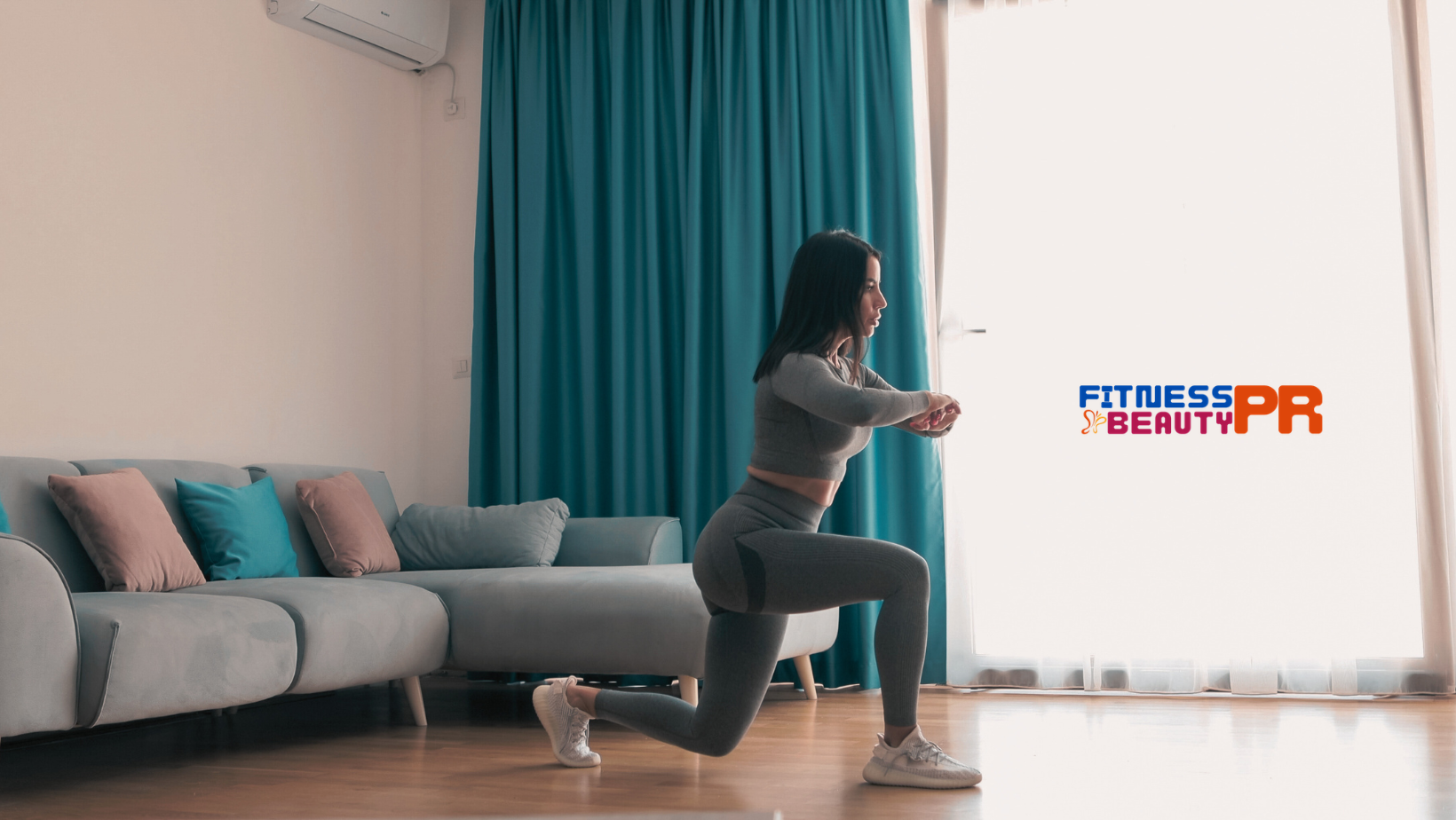
An effective home workout plan should consist of the following elements:
-
Activities to improve cardiovascular fitness.
-
Resistance training for building strength and muscle mass.
-
Exercises targeting the core muscles are crucial for stability and proper body alignment.
-
Training exercises that focus on balance to enhance coordination and prevent injury.
-
Stretching routines to increase flexibility.
By incorporating these components into your at-home routine, you can elevate your overall physical well-being through consistent workouts.
Strength Training
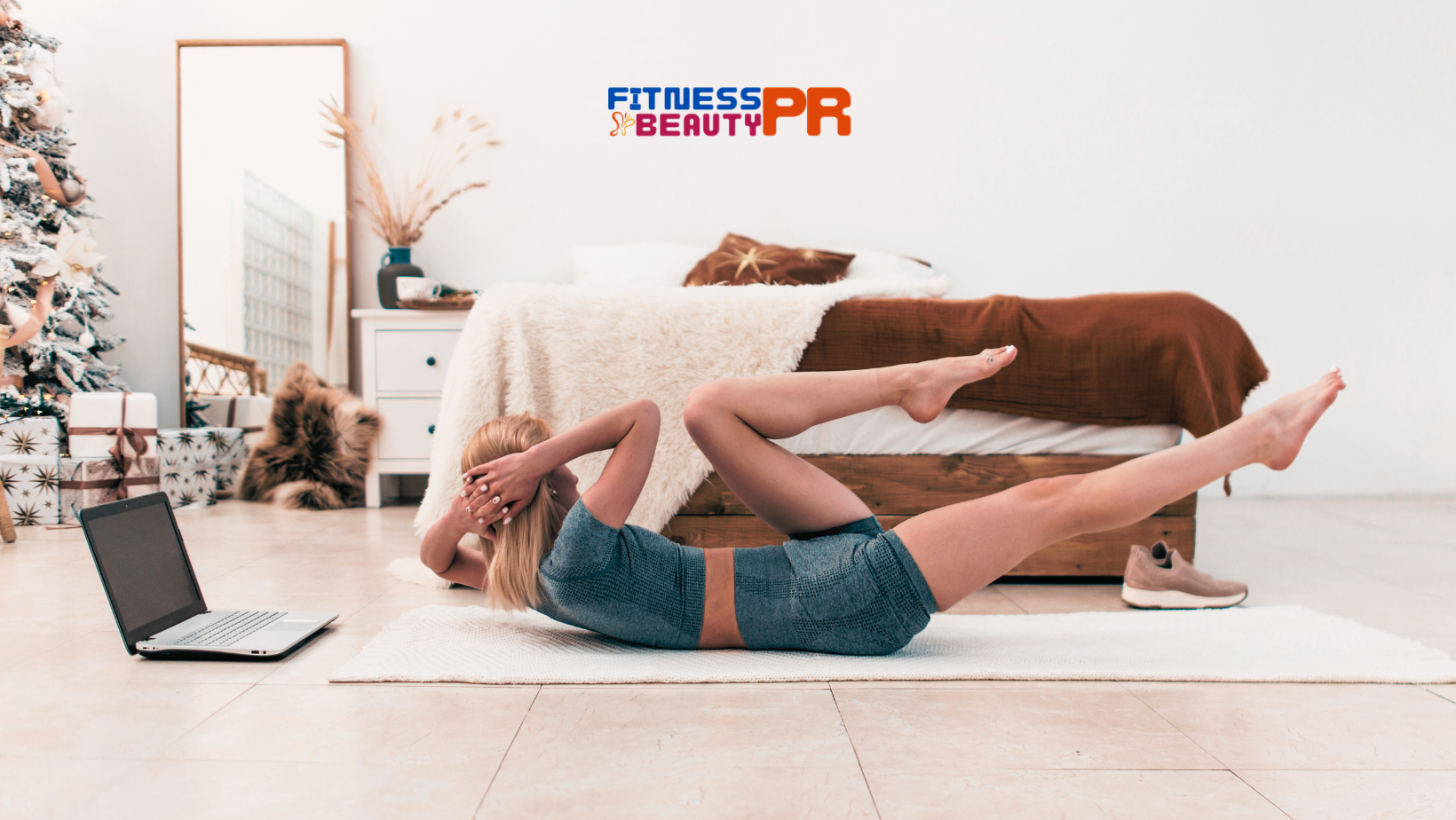
Incorporating strength training into your fitness routine is crucial for improving bone and muscle health. This can easily be achieved at home without requiring any or minimal equipment. There are a variety of bodyweight exercises to choose from, such as push-ups, mountain climbers, single-leg toe touches, and leg raises, which target different muscles, including the quadriceps, glutes, and core.
To maintain endurance in your muscles and promote strong bones, it’s recommended to utilize techniques like tempo training and performing multiple sets with short intervals between them. Regularly incorporating standardized tests like the squat test allows you to track progress over time by measuring improvements in form along with core and leg strength.
To effectively strengthen your body through exercise, it’s important to prioritize activities that require little equipment while providing significant benefits for overall physical well-being. By consistently integrating these types of routines into workouts, individuals will see positive changes not only physically but also mentally due to increased confidence gained through the achievement of their own goals.
Cardiovascular Exercise
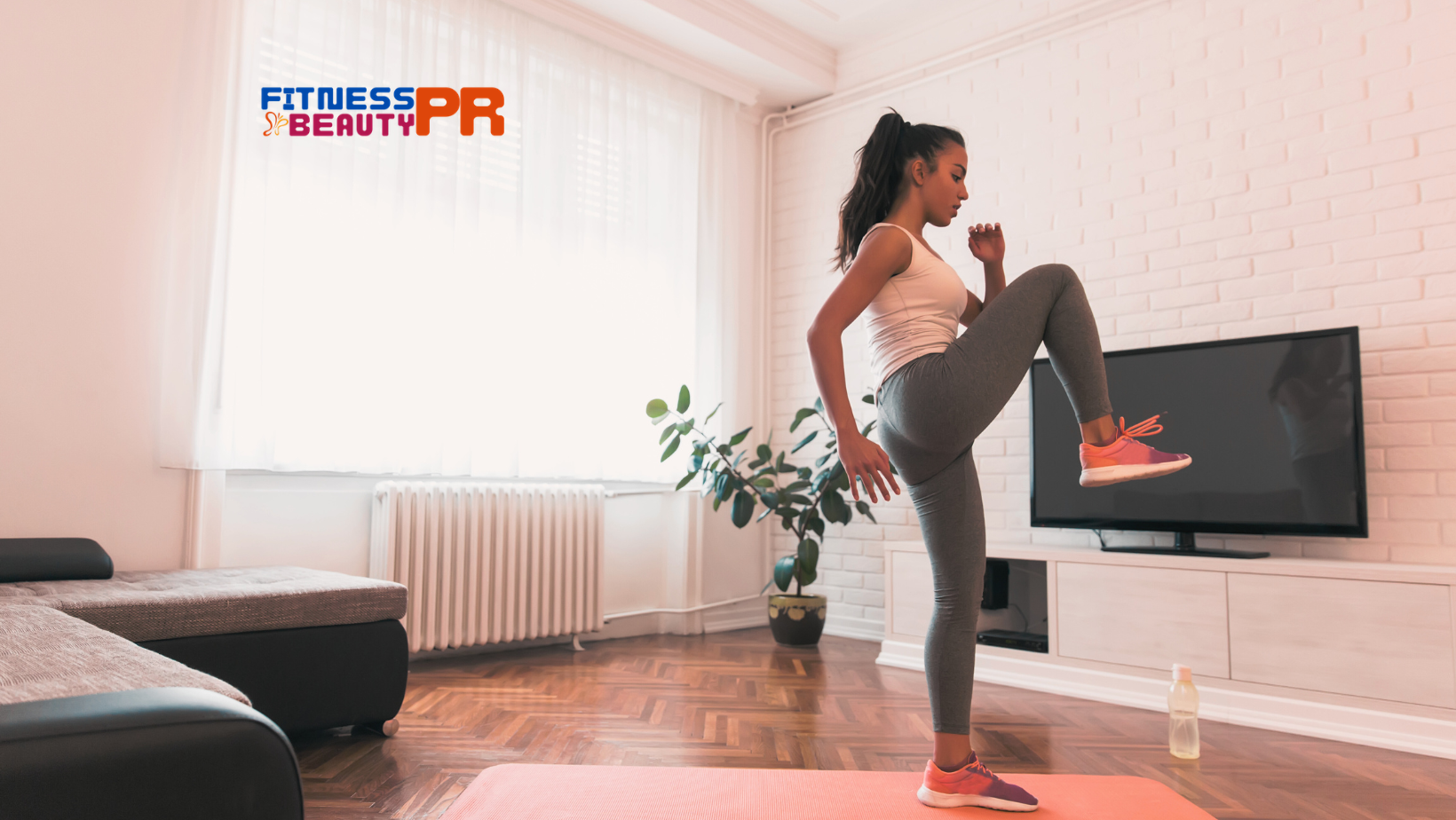
Start with simple aerobic exercises such as jumping jacks, high knees, or jogging in place to get your heart rate up. These activities do not require any equipment and can easily be done in a small space. Aim for short bursts of high-intensity exercises followed by periods of rest or lower intensity to maximize the benefits through a method known as High-Intensity Interval Training (HIIT).
For a more structured cardio session, you can create circuits that include a variety of movements such as burpees, mountain climbers, and skaters. Rotate through these exercises for a set time, such as 30 seconds each, with a brief rest in between to keep your heart rate elevated.
If you prefer a low-impact approach, consider exercises like brisk walking in place, step-ups using a sturdy chair or steps, or even dancing to your favorite music. These activities are gentler on the joints while still providing a good cardiovascular workout.
Remember to include a warm-up before diving into intense cardio to prepare your body and reduce the risk of injury. A cool-down period after your cardio session is also important to gradually lower your heart rate and stretch your muscles, aiding in recovery.
By incorporating a mix of these cardiovascular exercises into your home workout routine, you can create a balanced approach to full-body fitness that promotes heart health, burns calories, and enhances your overall well-being—all from the comfort of your home.
Flexibility and Mobility
Flexibility and mobility are two crucial elements of a fitness regimen that are often overlooked. Flexibility refers to the ability to stretch muscles to lengthen them, while mobility involves achieving and controlling an optimal range of motion in joints. Regular exercises targeting flexibility and mobility not only improve joint movement but also reduce injury risk and promote proper posture.
There are various at-home exercises one can do to increase flexibility and mobility levels, such as trunk rotations, supine snow angel movements, reverse lunges, deep squats, planks with rotation, single-leg hinges, and The World’s Greatest Stretch. These types of workouts target different areas, including the core, muscles in both upper limbs and lower body components like legs. These routines assist individuals by extending muscle lengths, reducing chances of injury.
Top 10 Bodyweight Exercises for a Full-Body Workout
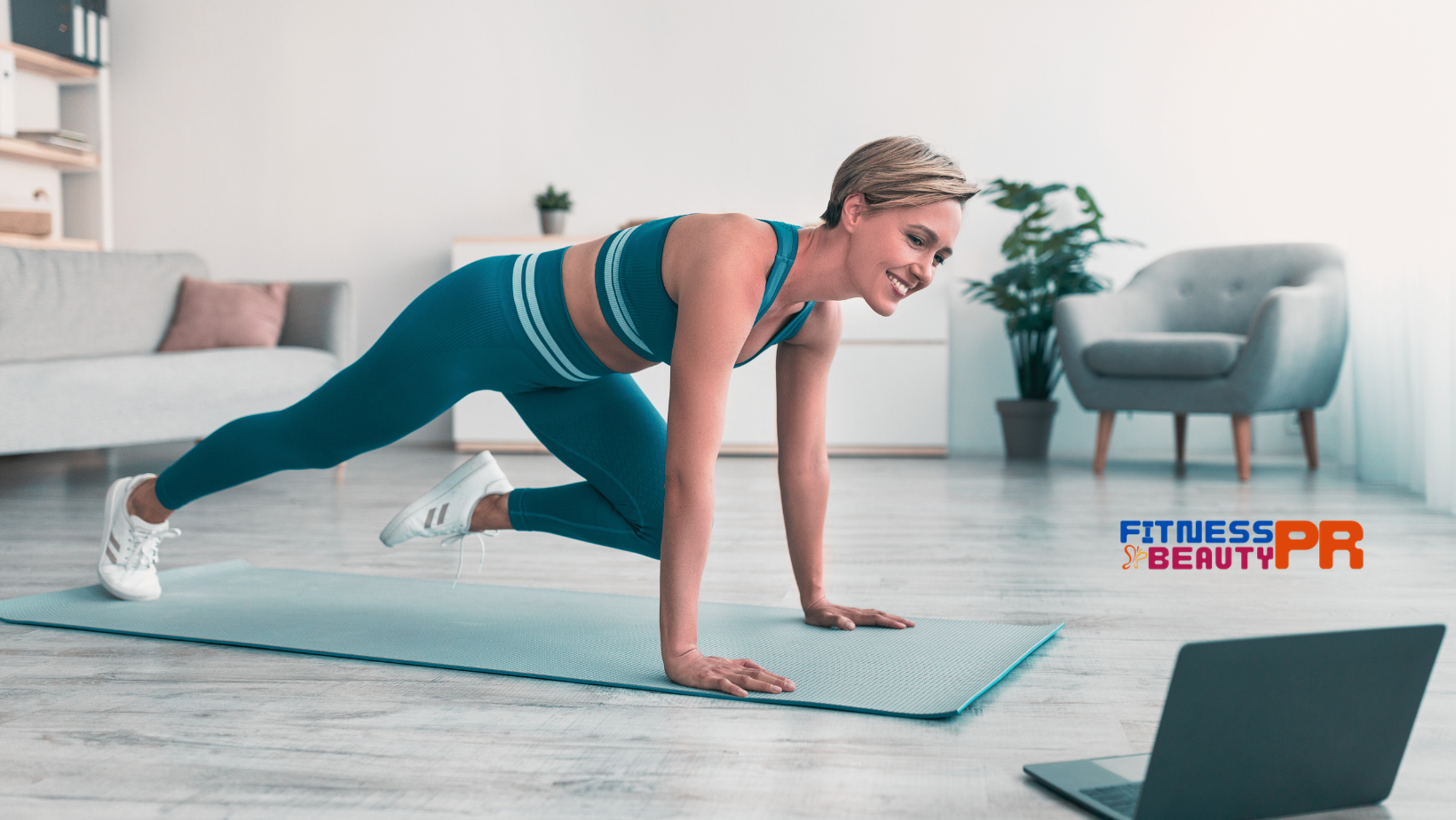
1. Push-Ups
Push-ups, the quintessential bodyweight exercise, are a staple in fitness routines worldwide. This simple yet powerful movement engages multiple muscle groups, including the chest, shoulders, triceps, and core, providing a fast and effective way to build strength without any equipment. Ideal for all fitness levels, push-ups can be modified to increase or decrease difficulty, ensuring that everyone, from beginners to seasoned athletes, can benefit from incorporating this classic exercise into their workout regimen.
Follow these steps to properly execute Push-ups:
Start in a plank position with your hands slightly wider than shoulder-width apart.
Keep your feet together and your body in a straight line from head to heels.
Lower your body until your chest nearly touches the floor.
Push through your hands to return to the starting position.
Repeat for the desired number of repetitions.
2. Squats

Squats are a fundamental bodyweight exercise that not only strengthens the lower body but also engages the core and back muscles, making it a full-body workout. By simulating the motion of sitting back into an invisible chair, squats target the quadriceps, hamstrings, glutes, and calves. Meanwhile, the core is activated to maintain balance and the back muscles work to keep the torso upright, thus providing a comprehensive workout that can be done anywhere, at any time, with no equipment necessary.
Follow these steps to properly execute Squats:
Stand with your feet shoulder-width apart.
Extend your arms out in front of you for balance.
Lower your body as if you’re sitting back into a chair until your thighs are parallel to the floor.
Keep your chest up and back straight throughout the movement.
Push through your heels to return to the starting position.
Repeat for the desired number of repetitions.
3. Lunges
Lunges are a versatile and dynamic exercise that effectively targets the lower body, including the quadriceps, hamstrings, glutes, and calves. Not only do they strengthen and tone these muscles, but they also engage the core and back to maintain balance and posture throughout the movement, making it a full-body workout. They can be easily performed at home with no equipment, making them a convenient addition to any fitness routine.
By stepping forward and lowering the body until both knees form 90-degree angles, lunges mimic a natural walking motion, which can improve functional fitness and mobility. Lunges can be varied in intensity and modified with additional movements to suit any fitness level, from beginners to advanced athletes.
Follow these steps to properly execute Lunges:
-
Stand with your feet together and take a step forward with your right leg.
-
Lower your body until both knees are bent at a 90-degree angle.
-
Make sure your front knee is directly above your ankle.
-
Push through your front heel to return to the starting position.
-
Repeat on the other side and continue alternating.
4. Plank

The plank is an isometric core strength exercise that involves maintaining a position similar to a push-up for the maximum possible time. It’s a fundamental exercise that strengthens the entire body, particularly the core, which includes the muscles of the abdomen, back, and hips. But its benefits go beyond the core, as it also engages your shoulders, chest, and legs, making it a full-body workout that requires no equipment and minimal space.
By holding the body off the ground and keeping it in a straight line, the plank can help improve posture, balance, and overall stability. It’s an incredibly versatile exercise that can be modified to increase or decrease difficulty, making it suitable for individuals at any fitness level. Due to its simplicity and effectiveness, the plank is a staple in many fitness routines and can be easily incorporated into any home workout regimen.
Follow these steps to properly execute Plank:
Lie face down with your forearms on the floor and your elbows directly beneath your shoulders.
Raise your body off the floor, keeping your body in a straight line from head to heels.
Tighten your core and hold this position for as long as you can.
5. Mountain Climbers

Mountain climbers are a dynamic exercise that combines cardiovascular conditioning with muscular endurance, engaging multiple muscle groups for a full-body workout. This versatile exercise is performed from a plank position and mimics the movement of climbing a mountain, hence the name. It primarily targets the core muscles but also works the arms, chest, quads, and hamstrings.
Mountain climbers elevate the heart rate, which can help improve aerobic fitness and burn calories. The beauty of mountain climbing is that it can be done anywhere with no equipment, making it a perfect addition to any home workout routine.
Follow these steps to properly execute Mountain Climbers:
Start in a plank position.
Bring your right knee toward your chest without lifting your hips.
Return to the starting position and repeat with your left knee.
Continue alternating legs at a quick pace.
6. Tricep Dips

Tricep dips are a bodyweight exercise that primarily targets the triceps, the muscles on the back of the upper arm. They also engage the shoulders, chest, and core, making them an effective full-body workout that can be easily performed at home. This exercise requires minimal equipment and can be done using a stable chair, bench, or even the edge of a couch.
Follow these steps to properly execute Tricep Dips:
Sit on the edge of a stable chair or bench with your hands just outside your hips.
Slide your butt off the edge and extend your legs out in front of you.
Straighten your arms, keeping a little bend in your elbows.
Lower your body by bending your elbows until at a 90-degree angle.
Press down into the chair to straighten your elbows and return to the starting position.
Repeat for the desired number of repetitions.
7. Burpees

Burpees are an explosive full-body exercise that combines a squat, plank, push-up, and jump into one swift movement. This high-intensity workout targets your arms, chest, quads, glutes, hamstrings, and core, making it a comprehensive exercise that improves both strength and cardiovascular endurance. It’s a versatile workout that can be performed in any space large enough to lie down in, making it ideal for a home workout routine. The beauty of burpees is their ability to offer a full-body workout without the need for any equipment, utilizing the body’s own weight to provide resistance.
Follow these steps to properly execute Burpees:
Stand with your feet shoulder-width apart.
Lower into a squat and place your hands on the floor.
Jump your feet back to a plank position.
Do a push-up.
Jump your feet back to your hands and leap into the air, reaching your arms overhead.
Repeat the movement without pausing.
8. Glute Bridges

Glute Bridges are a potent exercise designed to strengthen the posterior chain, which is the group of muscles comprising the glutes, hamstrings, and lower back. This exercise is particularly beneficial for those seeking to enhance their core stability, hip mobility, and lower body strength. The movement involves lifting the hips towards the ceiling while keeping the feet planted on the floor, effectively engaging the core and lower body muscles.
As a full-body workout, Glute Bridges also recruits the stabilizing muscles of the abdomen and lower back, and when performed with proper form, they can contribute to improved posture and functional strength. This exercise is ideal for home workouts as it requires no equipment and can be easily scaled to suit any fitness level by adding variations such as single-leg lifts or incorporating resistance bands.
Follow these steps to properly execute Glute Bridges:
Lie on your back with knees bent and feet flat on the floor, hip-width apart.
Push through your heels to lift your hips off the floor, forming a straight line from knees to shoulders.
Squeeze your glutes at the top and then slowly lower your hips back to the floor.
Repeat for the desired number of repetitions.
9. High Knees

High Knees is a dynamic cardiovascular exercise that involves running in place while lifting your knees as high as possible. This high-intensity movement engages your core, tones your thighs, works your glutes, and gets your heart rate up, providing a full-body workout that can be done in any space large enough to stand in.
High Knees not only improve lower body strength but also enhance coordination, agility, and endurance. By pumping your arms while lifting your knees, you also engage the upper body, ensuring a comprehensive workout session without any equipment, making it perfect for a home fitness routine.
Follow these steps to properly execute High Knees:
Stand with your feet hip-width apart.
Jog in place, bringing your knees up to waist level while pumping your arms.
Continue the movement, alternating legs at a fast pace.
10. Russian Twists
Russian Twists are a dynamic core exercise that involves twisting the torso from side to side while seated on the floor. This movement not only targets the abdominal muscles, specifically the obliques, but also engages the lower back, hips, and to a lesser extent, the shoulders and arms. By requiring the legs to be lifted slightly off the ground, it also activates the hip flexors and quads, making it a comprehensive full-body workout.
The Russian Twist is a versatile exercise that can be easily executed at home with no equipment, although for those seeking to increase the challenge, holding a weight or a similar object like a book can add extra resistance, enhancing the workout’s intensity.
Follow these steps to properly execute Russian Twists:
-
Sit on the floor with your knees bent and feet lifted slightly.
-
Lean back slightly, keeping your back straight.
-
Clasp your hands together and twist your torso to the right, then to the left to complete one rep.
-
Continue alternating sides for the desired number of repetitions.
These bodyweight exercises target all the major muscle groups for a full-body workout that can be done in the comfort of your own home without any equipment.
Tips for Staying Motivated and Consistent with Home Workouts
Maintaining motivation and consistency in your home workout can prove to be difficult. Nevertheless, by utilizing the following tactics, it becomes less daunting.
Set attainable objectives
Establish a schedule or regimen
Keep tabs on progress
Clearly defined accountability measures
By incorporating these methods into your routine, you will be able to sustain determination and regularity in your at-home workout sessions.
Set Realistic Goals
Setting realistic goals is the key to maintaining consistency in your fitness journey. Utilizing the SMART criteria- Specific, Measurable, Achievable, Realistic, and Timely- will help you establish achievable objectives.
To effectively stay motivated and focused on your goals, it’s essential to visualize them clearly. Begin by breaking down your ultimate goal into smaller set points that start from where you are currently with regard to physical fitness levels.
Establish a Routine
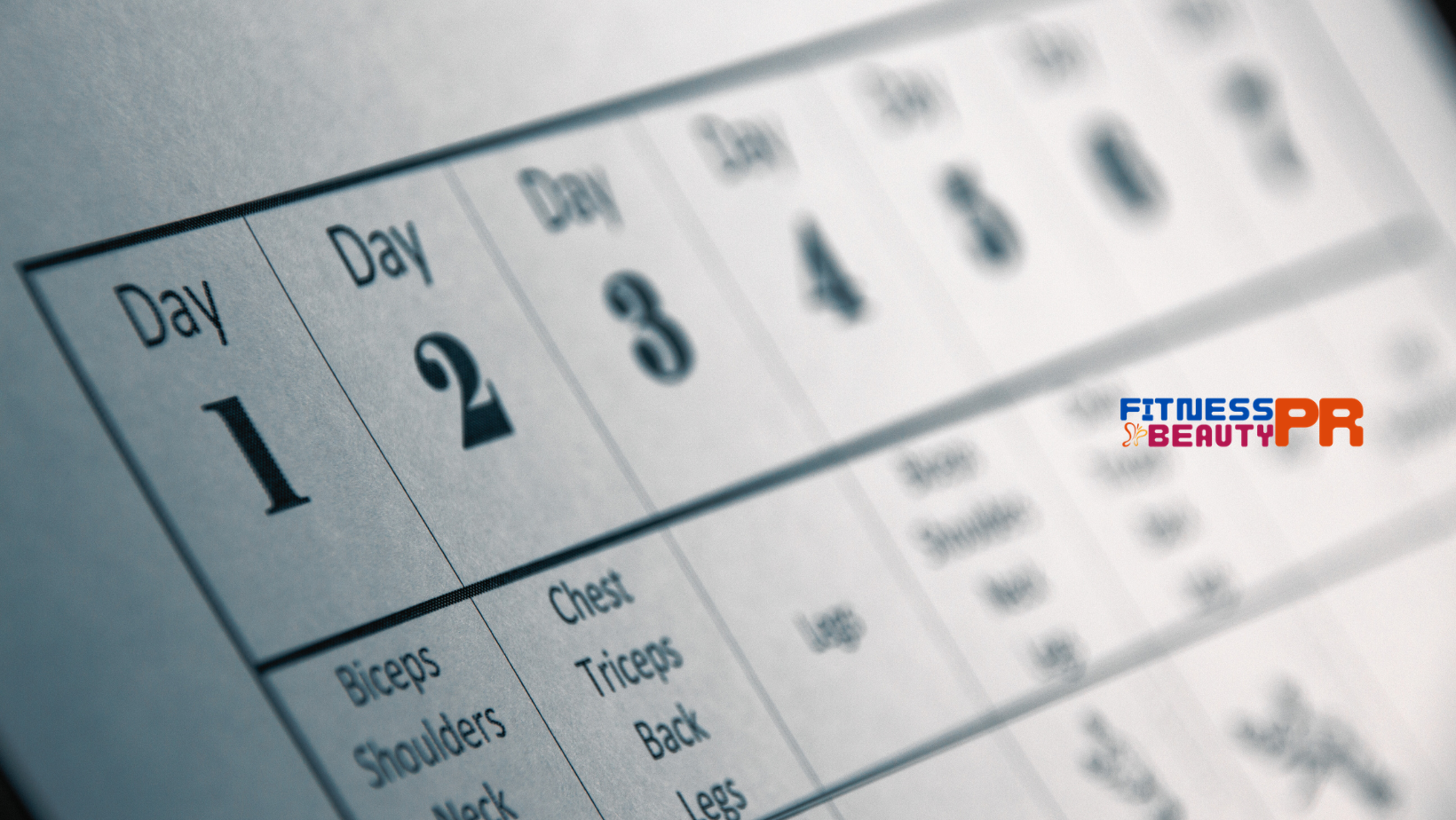
Establishing a daily exercise schedule and designating a specific area for physical activity are effective ways to stay consistent with your fitness routine. To ensure success, here are some recommendations.
Use a planner or calendar to map out achievable steps on a daily, weekly, and monthly basis in order to support your weight loss objectives.
If you encounter challenges maintaining consistency with your workout regimen, re-evaluate and make necessary adjustments to your goals.
Generate variety within your workouts by incorporating different exercises.
By adhering to these suggestions while also paying close attention to proper form during each exercise session, you can sustain regularity in exercising, which will ultimately result in successful weight loss and reaching the desired levels of fitness.
Track Progress
Keeping track of your progress is essential for staying motivated. A fitness journal can be a useful tool to record details about your workouts, meals, and thoughts on how you feel post-exercise. Utilize technology such as fitness trackers or apps to monitor physical activity levels, set achievable goals, and evaluate the outcomes.
Find Accountability Partners

Having a workout accountability partner can be beneficial in keeping you on track and consistent. Selecting someone who shares your level of motivation to work towards the same fitness goals can provide extra support and encouragement.
Incorporating digital fitness parties through video chat is another way to stay connected with your workout buddy while participating in home workouts. This adds a social aspect, making it more enjoyable and motivating for both individuals involved to stick to their exercise routines.
Adapting Home Workouts for Different Fitness Levels
Home workouts can be modified to cater to varying fitness levels. If you are just starting, consider reducing the number of repetitions and incorporating easier versions of exercises. Taking longer breaks between sets can also help ease into a workout routine.
On the other hand, those who have been exercising regularly may want to increase the intensity by adding extra circuits or performing exercises at a faster pace. More advanced movements, such as pistol squats and decline push-ups, can also be incorporated for an added challenge in-home workouts.
Home Workout Equipment Alternatives
Although it would be nice to have a fully equipped home gym, it is not essential. You can get creative and use everyday items found in your household to imitate the functionality of traditional gym equipment for at-home workouts. For instance, you can substitute hand weights with filled water bottles or tins of food, while a backpack filled with weight can serve as an alternative for weighted vests when doing bodyweight exercises.
Safety Tips for Home Workouts
It is essential to prioritize safety in workouts. Including stretching routines in-home workout sessions can prevent imbalances that may result in strains, discomfort, or injuries. It is also important to give muscles enough time for recovery and growth after a training session. It’s best not to do strength exercises targeting the same muscle group two days consecutively.
Incorporating Nutrition and Recovery into Your Home Workout Plan
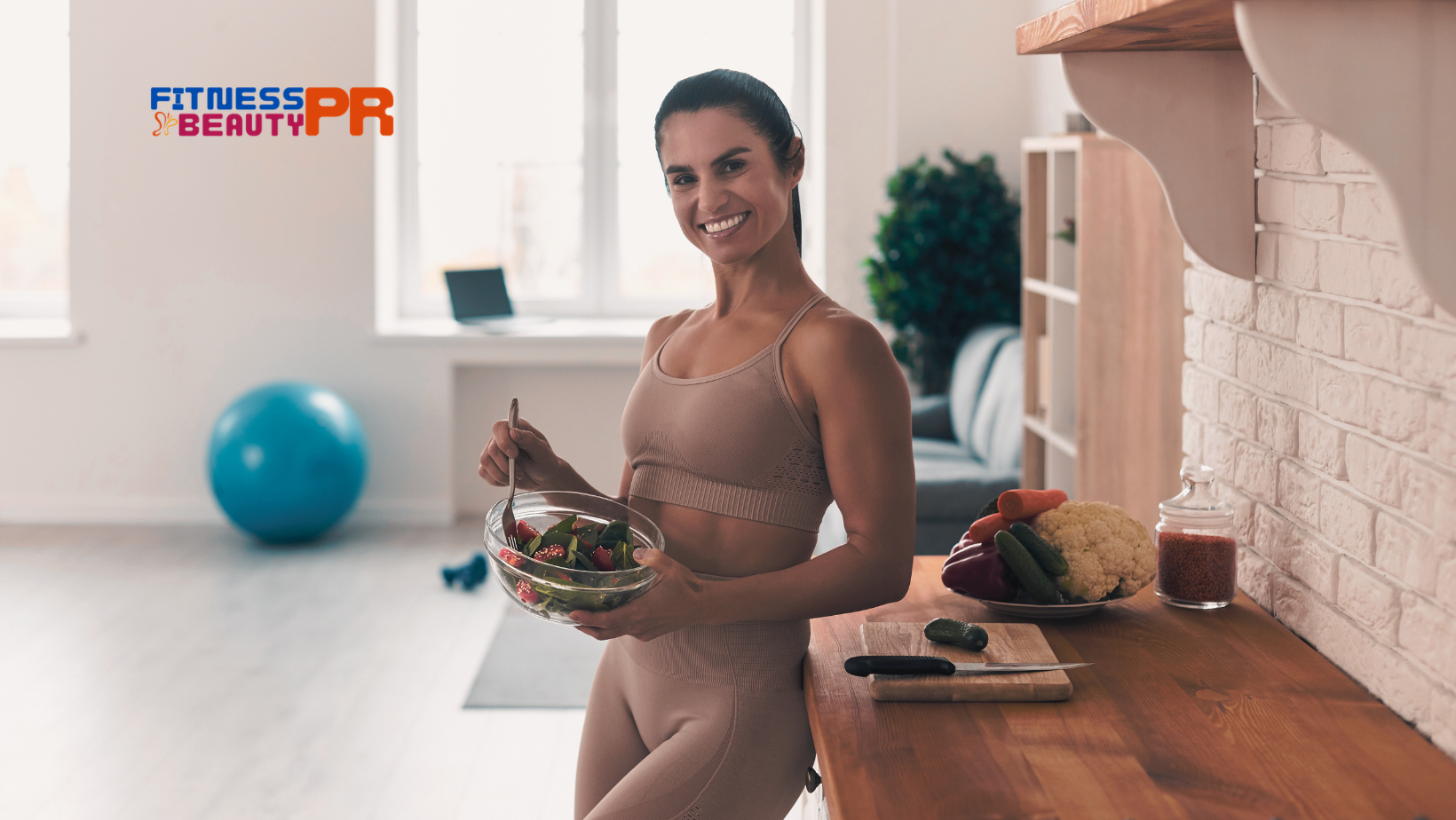
Completing your workout regimen does not mark the end of your fitness journey. Recovery and nutrition are equally important aspects to consider. Rather than during workouts themselves, it is actually during rest periods between exercises that muscles grow and recover.
A well-rounded diet containing essential calories and nutrients plays a vital role in fueling daily activities as well as exercise routines. On days when you work out, having a healthy breakfast can replenish blood sugar levels, which provides energy for both muscle and brain function. Incorporating the right carbohydrates into this meal ensures sustained energy throughout the day while maintaining stable blood sugar levels.
Online Resources and Apps for Home Workouts
In today’s digital era, there are a plethora of options available to assist in your home workout journey. Online resources and applications can complement your at-home workouts by providing structured exercises, progress-tracking tools, and a sense of community.
Some popular workout apps as recent as 2023 include BODi by Beachbody, ClassPass, FitOn, and Future. Each app offers unique features tailored to different preferences when it comes to fitness routines.
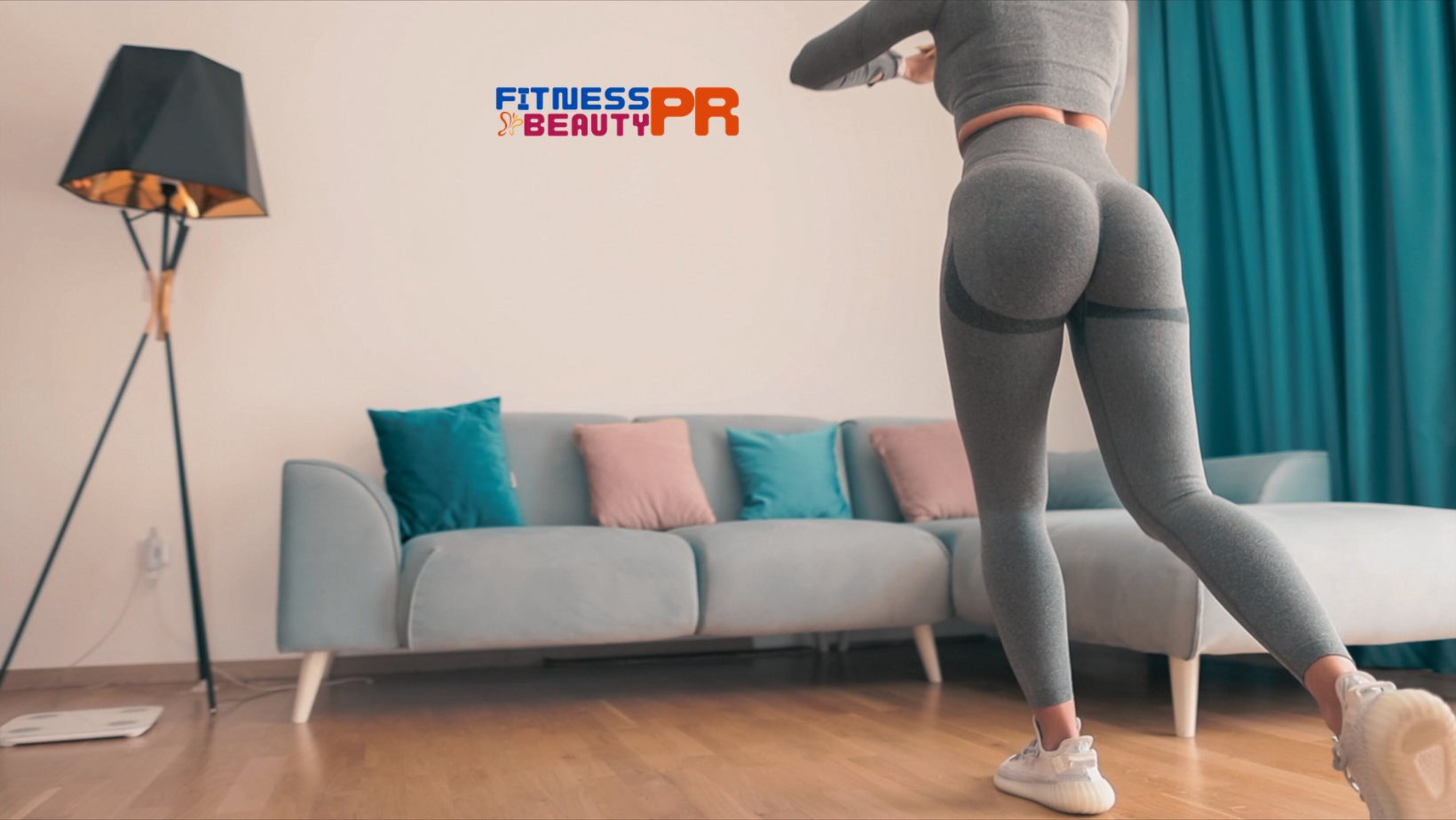
Home workouts are a convenient, adaptable, and affordable way to achieve a complete body workout. There is an extensive range of options available, including exercises using only your body weight, HIIT routines, low-impact movements, and yoga sequences. With the right attitude, regular schedule, and some creativity added into the mix, you can reach your fitness objectives without ever leaving home. So why not give them a try? After all, the most effective training routine is the one that works for you.
Frequently Asked Questions
What is the best workout for home?
To effectively warm up for a home workout, it is recommended to incorporate dynamic stretches and mobility exercises into your routine. Begin by performing leg swings, arm circles, and hip rotations in order to properly prepare your body for the main part of the workout. This advanced warm-up will help activate muscles and increase the range of motion before moving on to other exercises.
Do home exercises really work with just your body weight?
Yes, home exercises can be highly effective using just your body weight. Bodyweight exercises are versatile and can be adapted to suit any fitness level, from beginner to advanced. They can help improve strength, flexibility, endurance, and balance. By leveraging your own body weight, you can perform a variety of exercises such as push-ups, squats, lunges, planks, and burpees that target multiple muscle groups. With proper form, consistency, and a well-structured workout plan, you can achieve significant fitness gains without the need for additional equipment.
Is a 20-minute home workout enough?
According to the American College of Sports Medicine, a 20-minute workout at home can be sufficient if it is done with moderate to vigorous intensity. This advice supports the idea that a shorter duration does not necessarily mean less effectiveness in terms of exercise.
How can I get fit in 30 days at home?
In order to achieve a fit body within 30 days from the comfort of your home, establish a workout schedule for each week that includes various forms of exercise such as cardio and strength training. It is recommended to include activities like running, brisk walking, swimming, as well as bodyweight exercises in order to see significant results. Don’t forget to also incorporate rest days into your plan for proper recovery between workouts.
Workouts to do at home?
To get a complete workout without going to the gym or using any equipment, try doing squats, lunges, planks, push-ups and pull-ups at home. These exercises are effective in targeting different muscle groups for a full body workout. They allow you to work on your entire body without needing any specialized fitness gear.
Build A Home Gym
-
Ultimate Ears WONDERBOOM 3
$99.99Original price was: $99.99.$79.99Current price is: $79.99. -
Microsoft Surface Pro 7
$680.99 -
Fitness Factory Powerline BSG10X Home Gym
$1,395.00Original price was: $1,395.00.$1,095.00Current price is: $1,095.00. -
SAMSUNG Galaxy Watch 4 – Fitness Smartwatch
$199.99Original price was: $199.99.$169.99Current price is: $169.99. -
Fitness Factory Body-Solid Dual Ab and Back Machine
$795.00Original price was: $795.00.$625.00Current price is: $625.00. -
Body-Solid GFID100 Heavy Duty Adjustable Workout Bench
$395.00Original price was: $395.00.$315.00Current price is: $315.00. -
Apple Watch Series 8: Advanced Fitness Tracker & Smartwatch
$478.00Original price was: $478.00.$408.00Current price is: $408.00.






















